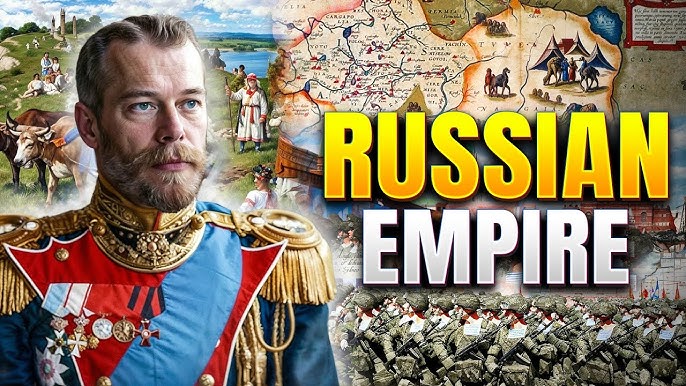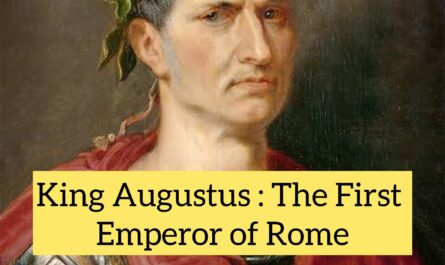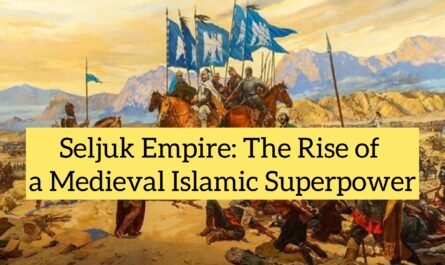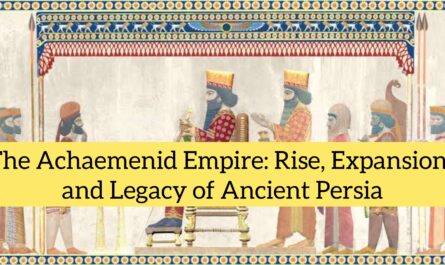Introduction
The Russian Empire, one of the largest and most enduring empires in world history, spanned over three centuries (1721–1917). At its height, it stretched from Eastern Europe to the Pacific Ocean, encompassing diverse ethnicities, religions, and cultures. Governed by the autocratic Tsars, the empire played a central role in global geopolitics, often straddling the line between European and Asian influences. Its eventual fall led to the birth of the Soviet Union and reshaped the 20th century.
Origins and Formation
Pre-Imperial Roots: Kievan Rus’ and Muscovy
-
The roots of the Russian Empire trace back to the medieval state of Kievan Rus’ (9th–13th centuries), which laid the cultural and religious foundation for future Russian states.
-
Following the Mongol invasion and the decline of Kievan Rus’, the Grand Duchy of Moscow (Muscovy) emerged in the 14th century as the center of Russian power.
Emergence of the Tsardom of Russia
-
Ivan IV (“Ivan the Terrible”) was crowned the first Tsar of Russia in 1547, transforming Muscovy into a centralized autocracy and expanding its territory.
-
The Time of Troubles (1598–1613), a period of political crisis, ended with the rise of the Romanov dynasty, which would rule for over 300 years.
Foundation of the Empire
-
In 1721, following victory in the Great Northern War against Sweden, Peter the Great declared the Russian Tsardom an empire and assumed the title “Emperor of All Russia.”
Expansion and Consolidation (18th–19th Centuries)
Territorial Growth
The Russian Empire became the largest contiguous land empire in history.
-
Peter the Great (r. 1682–1725):
-
Modernized the army and navy.
-
Westernized Russian society and administration.
-
Founded St. Petersburg, which became the new capital.
-
-
Catherine the Great (r. 1762–1796):
-
Expanded the empire into Crimea, Ukraine, and parts of Poland.
-
Promoted Enlightenment ideas but maintained autocratic rule.
-
-
19th-Century Expansion:
-
Conquests in the Caucasus, Central Asia, and Siberia brought in diverse ethnic and religious groups.
-
Russia also participated in the partitioning of Poland (1772, 1793, 1795) alongside Prussia and Austria.
-
Government and Administration
Autocracy and Bureaucracy
-
The Russian Empire was an absolute monarchy, with the Tsar wielding complete control over the state, church, and military.
-
A complex bureaucracy managed the vast empire, often plagued by inefficiency and corruption.
Serfdom
-
Most Russian peasants were bound to the land as serfs, a system of feudal-like bondage that persisted until 1861, when Tsar Alexander II issued the Emancipation Edict.
Orthodox Church
-
The Russian Orthodox Church was closely tied to the state, serving as a pillar of imperial ideology and Russian identity.
Society and Culture
Ethnic and Religious Diversity
-
The empire encompassed dozens of ethnic groups including Ukrainians, Poles, Finns, Tatars, Jews, Armenians, Kazakhs, and more.
-
Russian authorities often promoted Russification, attempting to assimilate minorities and suppress local languages and religions.
Cultural Flourishing
-
Despite political repression, the 19th century saw a golden age of Russian culture:
-
Literature: Fyodor Dostoevsky, Leo Tolstoy, Anton Chekhov.
-
Music: Tchaikovsky, Rimsky-Korsakov.
-
Philosophy: Slavophiles vs. Westernizers debates.
-
Military Conflicts and Foreign Policy
Napoleonic Wars
-
Russia played a key role in defeating Napoleon during the French invasion of 1812, often called the Patriotic War in Russia.
Crimean War (1853–1856)
-
Russia’s attempt to expand influence in the Balkans brought it into conflict with the Ottoman Empire, Britain, and France.
-
The war ended in defeat and exposed Russia’s technological and administrative backwardness.
Russo-Japanese War (1904–1905)
-
Russia suffered a shocking defeat by Japan, marking the first time an Asian power defeated a European empire in modern times.
-
The loss further undermined the Tsarist regime and sparked domestic unrest.
Reforms and Revolution
Reform Era
-
Alexander II attempted modernization with limited success:
-
Emancipated the serfs (1861).
-
Introduced judicial reforms, limited local self-government (zemstvos), and modernized the military.
-
Reaction and Repression
-
After Alexander II’s assassination (1881), subsequent rulers reverted to autocracy.
-
Repression of dissent, censorship, and ethnic persecution intensified under Alexander III and Nicholas II.
1905 Revolution
-
Sparked by economic hardship and political frustration.
-
Led to limited reforms including the creation of the Duma (parliament), though its power was tightly controlled.
Collapse of the Empire (1917)
World War I
-
Russia’s involvement in WWI drained its resources, caused massive casualties, and worsened internal discontent.
February Revolution (1917)
-
Mass protests and mutinies in Petrograd forced Tsar Nicholas II to abdicate.
-
A Provisional Government was established, but it struggled to maintain order and continue the war.
October Revolution (1917)
-
The Bolsheviks, led by Vladimir Lenin, overthrew the Provisional Government.
-
The Russian Empire officially ended, and the Soviet Union was founded in 1922 after a bloody civil war.
Legacy of the Russian Empire
Political
-
The fall of the empire marked the end of centuries of monarchy and autocracy.
-
It gave rise to the world’s first communist state, which would shape global politics in the 20th century.
Cultural and Demographic
-
The legacy of Russian imperialism remains in the form of ethnic Russian populations and Orthodox Christian communities throughout the former Soviet space.
-
Post-Soviet states like Ukraine, Belarus, and the Baltic nations continue to wrestle with this legacy.
Modern Impact
-
Russia today is shaped by both its imperial and Soviet past, blending traditions of centralized rule with attempts at modernization.
-
Modern geopolitical tensions—such as those involving Ukraine, the Caucasus, and Central Asia—have roots in the imperial era.
Conclusion
The Russian Empire was a vast and complex entity, whose rise and fall had immense consequences for global history. While it expanded Russian culture and influence across Eurasia, it also imposed autocracy and stifled reform. Its collapse during the early 20th century marked not only the end of an empire but also the beginning of a new and radical chapter in world history with the rise of the Soviet Union. Understanding the Russian Empire is essential to grasp the forces that continue to shape Russia and its neighbors today.



